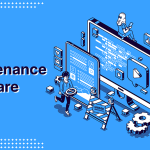In today’s era of ubiquitous SaaS, software license management has become crucial for organizations that heavily rely on technology. Just to give a quick rundown, it entails closely monitoring and tracking software licenses to ensure that they possess the necessary licenses to meet current and future requirements.
It is currently a bigger need than ever before, considering that the need for going fully remote has already proven to be a quick and devastating reality in recent years. Hence, license management will continue to be an indispensable part of software asset management for organizations to stay efficient (or just operational, in some cases) in a fast-paced digital landscape.
Related article: IT Budgeting: Importance, Tips, and Best Practices
“Approximately $34 billion in yearly licensing waste is
generated each year between the US and UK.”
Types of popular software licenses
So, what are the trends shaping the many types of software licenses in SaaS-dominated marketplaces across the world? Let’s dive into it!
- User-based licensing: The licensing is based on the number of users accessing the software. So, clients pay for a specific number of licenses, which can be scaled up or down as needed.
- Feature-based licensing: The licensing is based on the specific features or modules of the client’s software. It means the clients only pay for the specific features they need, which can be added or removed.
- Usage-based licensing: This model is based on the measured software usage. Clients are charged based on the amount of usage, such as the number of transactions processed, data storage used, or CPU hours consumed.
- Subscription-based licensing: In this model, clients pay a recurring fee for access to the software. The subscription fee may be based on the number of users or the features used or a flat fee for unlimited access for a fixed period.
- Concurrent-based licensing: The licensing is based on the number of simultaneous users who access the software, which means clients pay for a specific number of concurrent licenses. These can be shared among users on an as-needed basis.
“100% of organizations with 30,000 – 100,000 employees think that
they are over-licensed and losing money with nearly 20% stating
that they are very over-licensed.”
What drives innovation in software license management?
As the types of licensing structures keep evolving, it’s also necessary to understand the inherent challenges that affect how software can be managed. These include multiple licensing models, which can vary significantly between vendors and products, complicated updates/upgrades due to major technological changes, lack of collaboration between different departments, and resource-intensive workflows.
So, to stay ahead of the curve, incubating a culture of innovation across the software license management journey is vital. But what counts as innovations here?
More AI? More automation? More data analytics?
Well, the fact is that software license management innovation is more strategic than the mere adoption of technology. So let’s look at two of its biggest focus areas:
- Security and compliance issues: Organizations have become more concerned about protecting their data and meeting regulatory requirements. It’s why most of the innovation boosts security and compliance governance. That way, they can comply with relevant regulations and standards, such as GDPR or HIPAA, while avoiding costly fines associated with non-compliance. It can also help minimize the risk of security incidents and data breaches by ensuring that only authorized users can access licensed software in hybrid or remote work environments.
- Cost optimization: What good is SaaS innovation if it doesn’t result in cost savings? Optimizing software licensing costs ensures that organizations can free up resources to invest in other areas of the business, such as product development or marketing. It also helps maximize the value of software investments by identifying unused or underused licenses and reallocating them to areas where they are needed.
Now that it’s clear what drives innovation in software license management, let’s look at some of the innovative strategies that are fast catching the attention of organizations.

3 strategic areas for innovation in software license management
Establishing the right SaaS discovery approach
The right SaaS discovery approach helps identify and track all SaaS applications seamlessly. It empowers organizations to detect unused or underutilized licenses. In turn, this enables them to reclaim licenses and avoid unnecessary costs. It also assists in optimizing software usage and better aligning with business needs. Equipped with centralized data insights, organizations can make better-informed decisions about which software to invest in and which to retire.
Bringing shadow IT software to the light
Organizations can identify any unauthorized applications used within their environment by monitoring network traffic and analyzing user behavior. They can then take steps to either secure and manage these applications or remove them altogether. By staying vigilant and proactive in identifying and tracking shadow IT applications, managing the entire software environment becomes easier while making it more risk-free. But, this requires ongoing effort, including educating employees on IT policies and ensuring that IT systems are up-to-date. Obviously, it also helps prevent unnecessary expenses by identifying duplicate software.
Staying on top of license expirations and renewals
At its core, monitoring upcoming contract expirations and renewals help avoid service interruptions –eliminating the barriers that affect business operations and workforce productivity. But it also enables organizations to plan their budgets effectively while better-allocating resources and making more informed decisions. Staying on top of expirations and renewals can also unearth opportunities to negotiate better contract terms or pricing and stay compliant with licensing agreements. Additionally, it becomes possible to reclaim and re-provision software licenses to other users – eliminating the need to purchase additional licenses.
Certainly, the future of software license management is as exciting as it can be challenging, with these emerging trends reshaping the landscape. As cloud computing and digital transformation become a more pressing demand (than they are today), software licensing models will need to evolve.
Related article: What are the Major Types of Asset Management in 2023?
“Gartner predicts that most organizations can cut software spending by as much as 30% by implementing software licensing best practices.”























